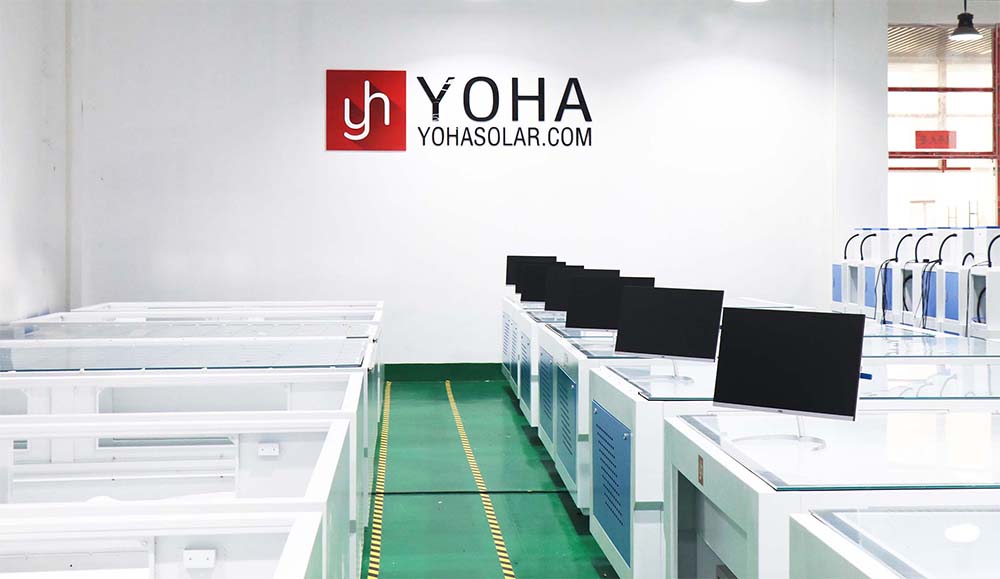On the quest for higher efficiency and more reliable quality in the photovoltaic industry, PV module IV testers play an irreplaceable and critical role. Like an experienced physician, they conduct precise "I-V (Current-Voltage) characteristic curve scans" to provide a detailed "health check report" for every solar module. This makes them an essential tool for ensuring product quality, optimizing system design, and maximizing power plant revenue.
Core Technical Principle: Capturing Electrical Performance Profiles with Precision
The core function of a PV module IV tester is to rapidly and accurately measure the relationship between current (I) and voltage (V) of a PV module under simulated or real-light conditions, plotting the critical I-V curve and power-voltage (P-V) curve. Key aspects include:
- Controlled Load Scanning: The instrument integrates a sophisticated electronic load system. It performs continuous or point-by-point scanning across the module's entire operating voltage range—from open-circuit (Voc, highest voltage, zero current) to short-circuit (Isc, highest current, zero voltage)—with exceptional speed and accuracy.
- Synchronous Data Acquisition: While varying the load, a high-precision data acquisition system simultaneously records the corresponding voltage across the module and the current flowing through it. This demands extremely low measurement error and excellent anti-interference capability.
- Standard Condition Calibration (Critical): To enable fair, comparable evaluations, PV module IV testers must correct measured data to Standard Testing Conditions (STC: 1000 W/m² irradiance, 25°C cell temperature, AM1.5 spectrum). This requires precise real-time measurement or input of irradiance (typically via high-grade reference modules or sensors) and module temperature data, followed by complex algorithmic conversion. The I-V curve obtained via the IV tester is the most direct expression of a module's performance.

Decoding Performance: Core Parameters and Their Significance
Analysis of the I-V/P-V curves generated by the IV tester reveals core performance parameters:
- Open-Circuit Voltage (Voc): Voltage at the terminals under no load (zero current output). Voc exhibits a significant negative temperature coefficient and is fundamental for evaluating series design and system voltage matching.
- Short-Circuit Current (Isc): Current output under short-circuit (zero output voltage). Isc is proportional to incident light intensity (slight positive temperature coefficient) and directly reflects module photocurrent generation capability.
- Maximum Power Point (Pmax / Pmpp): The point on the I-V curve where the product of voltage and current is maximized, representing the maximum power the module can deliver under specific conditions. This is the golden metric for assessing power generation capability.
- MPP Voltage (Vmpp) & Current (Impp): Operating voltage and current at Pmax output, serving as the target for inverter MPPT (Maximum Power Point Tracking) algorithms.
- Fill Factor (FF): Measures the "squareness" of the I-V curve: FF = Pmax / (Voc * Isc). A higher FF (closer to 1) indicates lower series resistance, higher shunt resistance, better electrical performance, and lower energy loss. The IV tester is the data source for FF calculation.
- Conversion Efficiency (η): Ability to convert incident light into electricity: η = Pmax / (Module Area * Incident Irradiance). This is a key indicator of module technology level.
- Temperature Coefficients: IV testing at different temperatures yields precise coefficients for how Voc, Isc, and Pmax change with temperature, crucial for predicting module performance in real-world environments.
Ubiquitous Application Value
PV module IV testers are indispensable across the PV value chain:
- Manufacturing & Final Inspection: Every module undergoes mandatory IV testing post-production to ensure output meets its nameplate power (typically within positive tolerance) and to screen for defects like micro-cracks, broken cells, poor soldering, or PID (Potential Induced Degradation) risk. It is the gatekeeper of module certification.
- Power Plant Construction & Acceptance: Portable IV testers are used for sampling or full testing during installation and before grid connection to verify no performance degradation occurred during shipping/installation, ensuring initial plant capacity meets design specifications. IV tester data is the core basis for plant acceptance.
- Plant Operation & Fault Diagnosis: When plant output underperforms, technicians use IV testers to diagnose problematic strings or modules. Analyzing curve shapes (e.g., steps, double peaks) and key parameters (e.g., severe Pmax drop, abnormal FF) pinpoints issues like hot spots, diode failure, severe soiling, or connection faults, enabling targeted repair. IV testers act as the plant's scout for efficient O&M.
- R&D & Lab Analysis: High-precision IV testers are essential for evaluating new materials/processes/structures, analyzing degradation mechanisms (e.g., LID, damp heat aging), and characterizing novel cell technologies. Lab-grade testers offer wider ranges, higher accuracy, and advanced environmental simulation.
Technology Evolution & Future Trends
Advancing PV technology demands more from IV testers:
- Higher Precision & Speed: Lower measurement uncertainty for calibrating high-efficiency cells (HJT, TOPCon); faster testing for rising production throughput.
- Increased Intelligence & Automation: AI for curve analysis and fault diagnosis; seamless integration with production lines, logistics, and SCADA for automated data upload/reporting.
- Enhanced Outdoor Testing: Development of robust portable devices for reliable data under complex, variable natural light; exploration of dynamic IV testing for real-world irradiance response.
- Multi-Function Integration: Combining with EL (Electroluminescence) testing, thermography, and other techniques for comprehensive module health assessment. IV testers are becoming smarter and more integrated.
Conclusion
The PV module IV tester is the cornerstone of quality control, performance evaluation, and technological advancement in the solar industry. It provides objective, quantified data, precisely mapping the "health" and generation potential of every module. Whether ensuring consistent factory output quality, guaranteeing the efficient operation of gigawatt-scale power plants, or driving cutting-edge R&D, the IV tester remains the indispensable "precision eye" behind the industry. As technology progresses and applications expand, it will continue delivering core value in propelling PV towards a future of greater efficiency, reliability, and intelligence.
keywords:
 Chinese
Chinese
 English
English
 Chinese
Chinese
 English
English

